Introduction to Laser Therapy for Gum Disease
Gum disease, also known as periodontal disease, affects a significant majority of adults worldwide and can lead to serious dental health issues including tooth loss. Traditional treatments often involve invasive surgical procedures with longer recovery times and discomfort. Recently, gentle laser therapy has emerged as a groundbreaking alternative, offering precise, minimally invasive, and effective treatment options. This article explores how laser gum therapy works, its benefits, the procedure, aftercare, and long-term management, shedding light on why it is becoming the preferred choice for many patients and dental professionals alike.
Understanding Gum Disease and Traditional Treatments
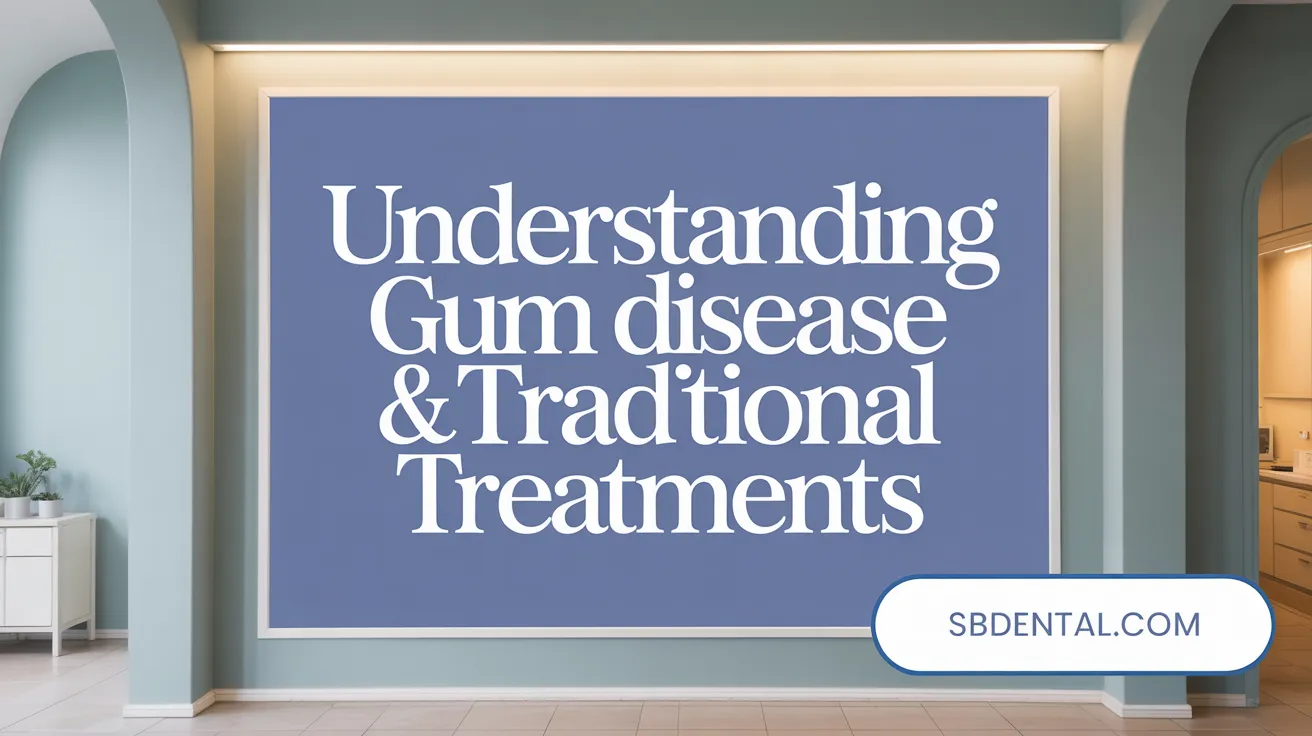
What is gum disease and how does it progress?
Gum disease, also known as periodontal disease, is an infection affecting the gums and the structures supporting teeth. It begins with the buildup of bacterial plaque that can harden into tartar if not removed, leading to inflammation called gingivitis. Gingivitis is reversible with treatment, but if left untreated, the infection advances into periodontitis. This stage causes destruction of gum tissue and bone around teeth, leading to symptoms such as red, swollen, and bleeding gums, gum recession, loose teeth, and bad breath. Severe cases may result in tooth loss and are linked with systemic health risks like heart disease and diabetes.
What are the standard treatment options for gum disease?
Early gum disease is commonly treated through professional dental cleanings and scaling and root planing, a deep cleaning procedure that removes plaque and tartar from beneath the gumline and smooths tooth roots to encourage gum reattachment. Antibiotics—topical or systemic—may be prescribed to control bacterial infections. For advanced periodontitis, surgical treatments such as pocket reduction surgery, gum grafting, bone grafting, or guided tissue regeneration become necessary to repair damaged tissues.
Limitations and risks of conventional therapy
Traditional non-surgical and surgical treatments can be effective but have drawbacks. Surgical methods are often invasive, involving incisions and sutures, leading to increased bleeding, swelling, discomfort, and longer recovery periods ranging from one to several weeks. These procedures may also carry risks of infection and gum recession. Additionally, some patients may experience sensitivity or pain during and after treatments, which can affect comfort and compliance with post-treatment care. Maintaining good oral hygiene and regular dental visits is critical to managing disease progression and preventing recurrence.
How Gentle Laser Therapy Works for Gum Disease
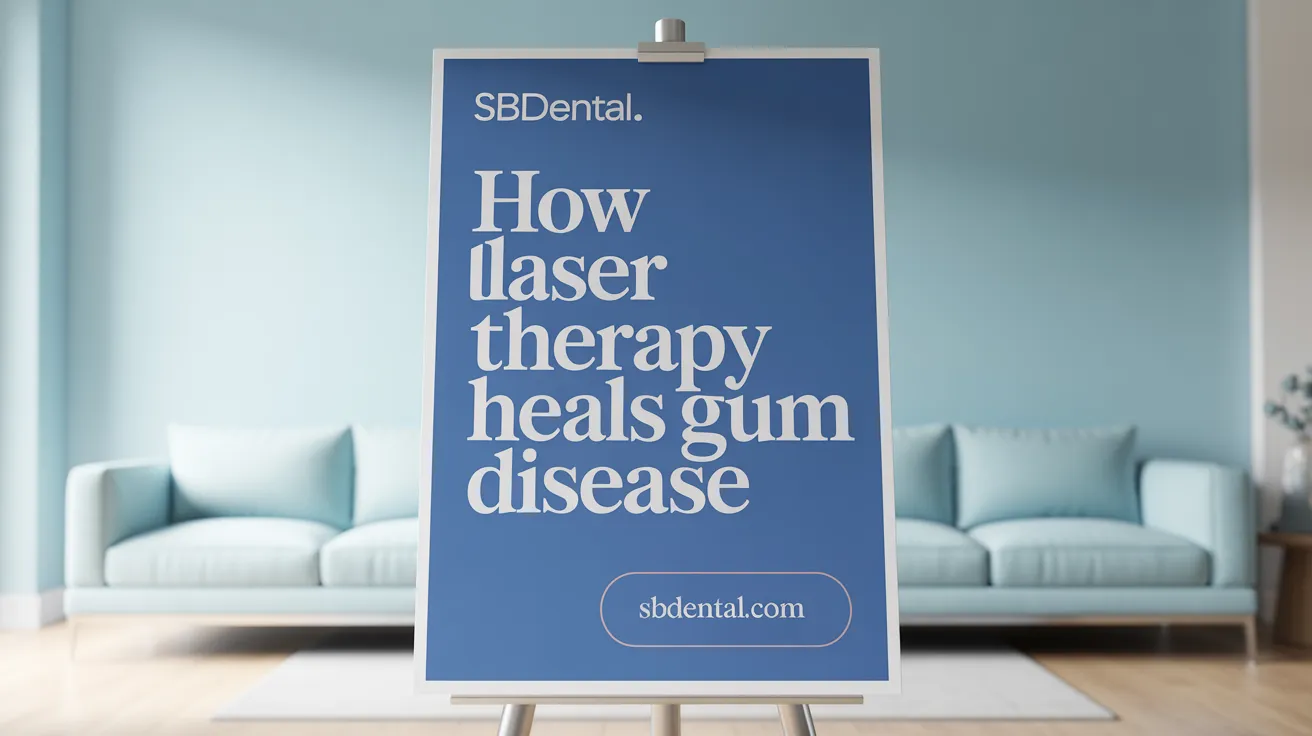
How does laser therapy treat gum disease?
Laser therapy treats gum disease by using precise wavelengths of laser light to target and remove diseased gum tissue and bacteria located beneath the gums. The laser effectively sterilizes the treated area by killing harmful bacteria, vaporizes infected tissue, and cauterizes blood vessels to reduce bleeding during the procedure. This targeted approach minimizes damage to healthy tissue while promoting healing and regeneration of the gums. The laser's heat energy stimulates natural tissue repair processes, allowing gum tissue to reattach to the teeth and aiding in the reduction of periodontal pockets. For more details, see Laser Therapy for Gum Disease and Laser periodontal therapy.
What types of lasers are used for periodontal therapy?
Different types of lasers are utilized depending on the treatment requirements:
- Diode Lasers: Commonly used for soft tissue and bacterial reduction. They have excellent hemostatic properties which control bleeding and are effective in sterilizing periodontal pockets.
- Nd:YAG Lasers: These lasers penetrate deeper into the tissue. They are useful for debriding infected gum tissue and managing deep periodontal pockets due to their high absorption in pigmented tissues and bacteria.
- Er:YAG Lasers: Primarily used for removing hard deposits such as calculus and for decontaminating root surfaces. This laser also aids in promoting tissue regeneration by thoroughly cleaning periodontal pockets.
You can learn more about these laser types at Use of lasers in periodontal treatment and Laser use in dentistry.
How do lasers promote sterilization and tissue regeneration?
Laser therapy simultaneously sterilizes the periodontal area by killing bacteria and removes diseased tissue with precision. The heat generated also cauterizes blood vessels to reduce bleeding and swelling, encouraging a cleaner and less inflamed environment conducive to healing. Additionally, laser energy stimulates fibroblast activity and promotes the formation of new blood vessels which are critical for tissue repair and regeneration, leading to improved gum attachment and periodontal health. For more information, consult Benefits of Laser Therapy in Dentistry and Laser gum therapy overview.
Benefits and Limitations of Laser Gum Therapy
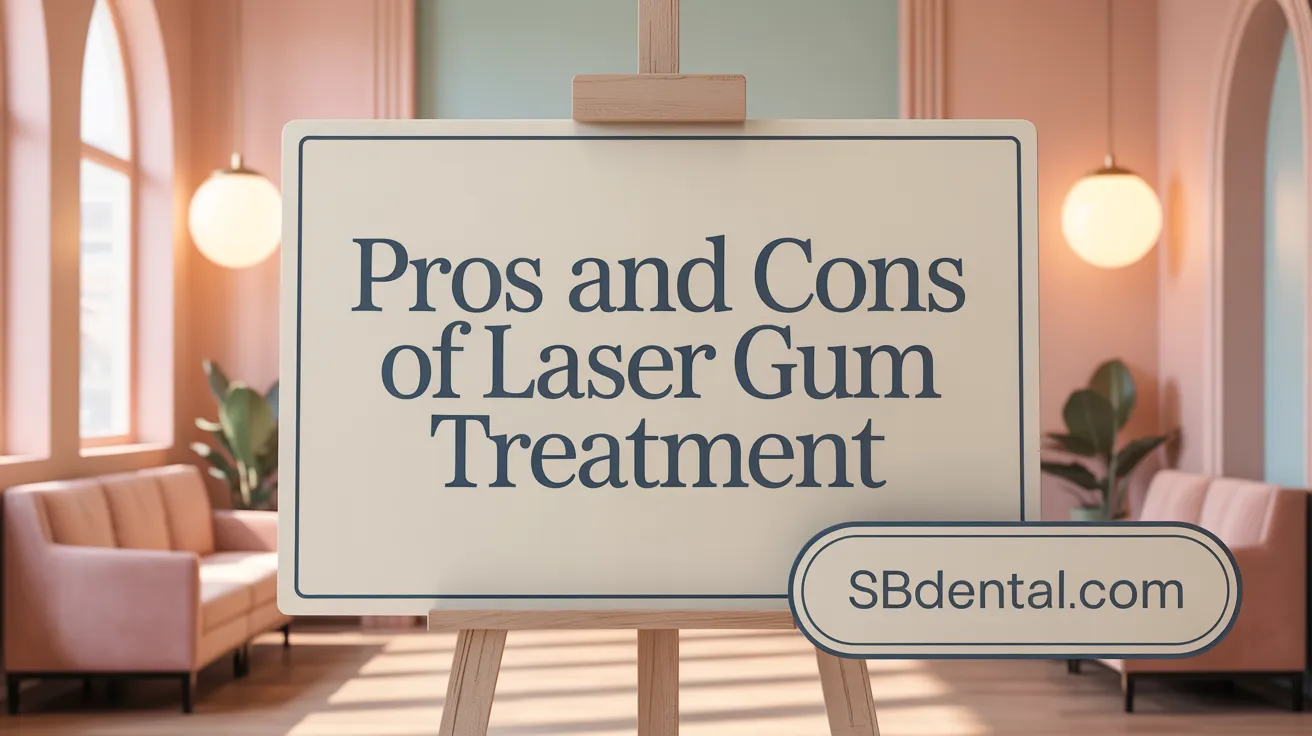
What are the benefits of laser gum therapy?
Laser gum therapy offers several distinct advantages over traditional surgical treatments for gum disease. It reduces pain, bleeding, and swelling by cauterizing tissues and sterilizing the treatment area, which leads to a gentler and more comfortable procedure without the need for general anesthesia. The cauterization also helps control bleeding effectively. Patients typically experience faster healing times and minimal recovery periods, often returning to normal activities within about a week.
Another benefit is the laser’s ability to precisely target only diseased tissue while preserving healthy gum tissue, promoting better gum regeneration and attachment to teeth. This focused treatment reduces the risk of infection since the laser sterilizes the area during therapy. The minimally invasive nature of laser therapy makes it particularly advantageous for patients with dental anxiety or those who prefer to avoid the discomfort associated with scalpels and sutures.
Are there any disadvantages or limitations to laser gum treatment?
Despite these benefits, laser gum therapy has limitations. It tends to be more expensive than conventional treatments, with costs often ranging between $2,000 to $8,000, and may not be covered fully by insurance. Availability is also a concern, as not all dental practices have the specialized laser equipment or trained professionals needed to perform the procedure.
Laser treatment may be less effective in severe and advanced cases where significant bone and tissue loss have occurred. Due to the limited penetration depth of laser beams, extensive damage might require traditional surgical interventions. Furthermore, patient suitability varies; some individuals may not be candidates due to their specific periodontal condition or other health factors. In such situations, a periodontist may recommend alternative or complementary treatments.
In summary, while laser gum therapy provides a comfortable, precise, and faster-healing option for many patients, it should be chosen with consideration of disease severity, cost, and professional expertise.
The Laser Gum Treatment Procedure and Aftercare
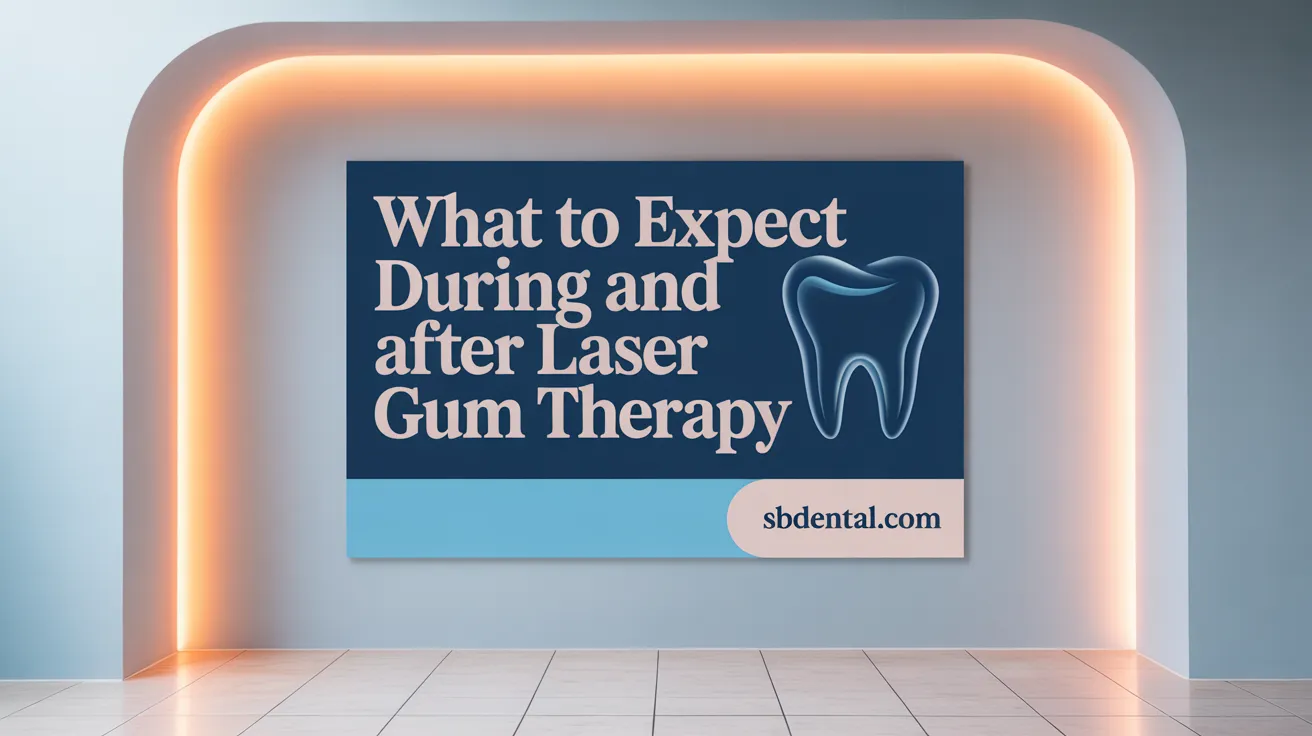
What happens during a laser gum therapy session?
Laser gum therapy begins with a thorough consultation and diagnostic evaluation, including dental X-rays and measuring the depth of gum pockets. Once the area is assessed, local anesthesia is applied to ensure patient comfort throughout the procedure. A specialized dental laser is then used to precisely remove infected and diseased gum tissue while sterilizing the pockets surrounding the teeth. This laser application is often done without the need for sharp incisions or sutures, making the procedure minimally invasive. In addition to the laser work, ultrasonic scalers may be used to clean off tartar and bacteria from the tooth roots. The session typically lasts about an hour, though this can vary based on the severity of the gum disease.
What should patients expect after treatment and how should they care for their gums?
Following the treatment, patients might notice mild soreness, increased tooth sensitivity, slight gum swelling, minor bleeding, or temporary discoloration of the gum tissue. These post-treatment symptoms of laser gum therapy are generally mild and resolve on their own within a few days. Proper aftercare is crucial to support healing and prevent complications. Patients are advised to avoid brushing or flossing the treated areas immediately after therapy. Instead, rinsing gently with warm salt water or a prescribed antimicrobial mouthwash helps keep the area clean. A soft diet after laser gum therapy that avoids hot, spicy, or hard foods is recommended, as well as steering clear of tobacco products. Limiting physical exertion for 24 to 48 hours can also promote better healing.
How long does recovery take, and what are signs of complications?
Recovery from laser gum treatment usually takes about one week, though individual healing times vary depending on overall health and the extent of the treatment performed. While the therapy is designed to reduce risks such as infection and excessive bleeding, patients should be alert for signs of infection after gum treatment. These include the presence of pus or oozing from the gums, swelling that worsens instead of improves, increasing pain, or the onset of fever. If any of these occur, it is important to seek dental care promptly to address possible infections or other concerns. With proper adherence to aftercare instructions for laser gum therapy, laser therapy enables quicker healing and helps restore gum health with minimal discomfort compared to traditional surgery.
Long-Term Management and Outcomes with Laser Therapy
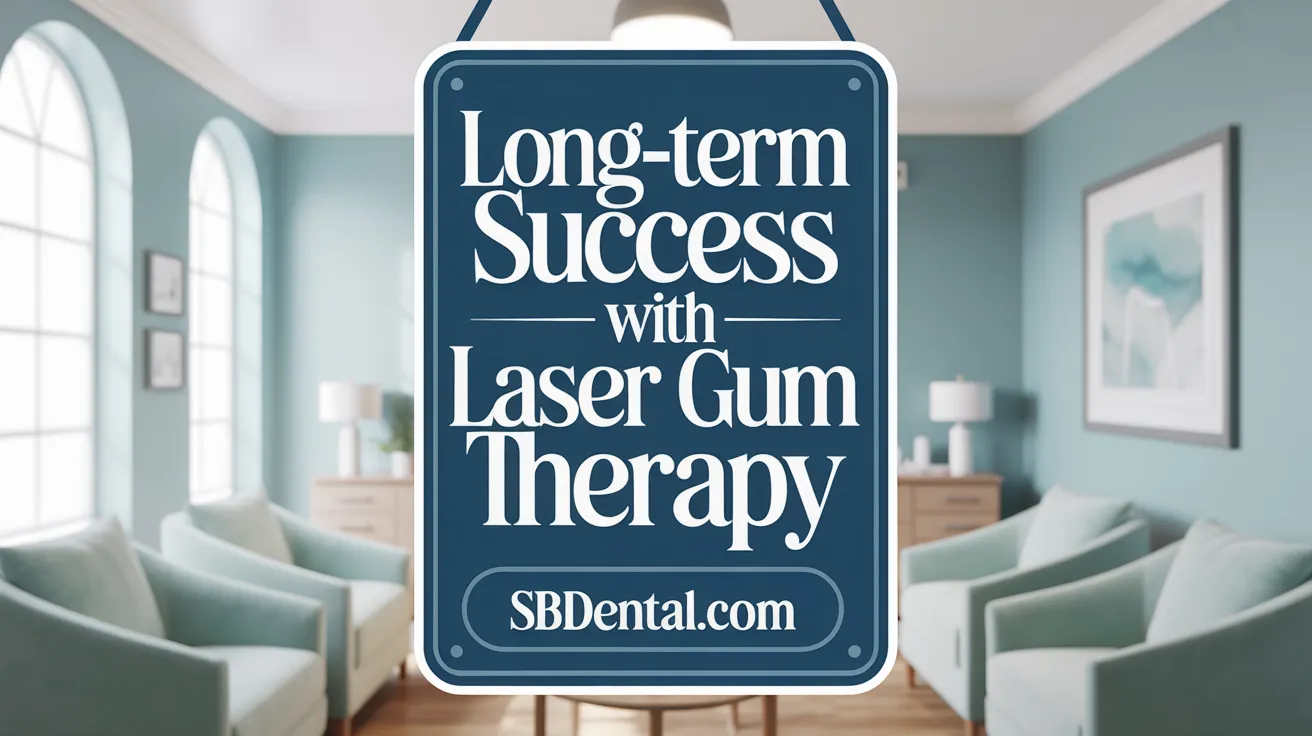
How effective is laser therapy for treating gum disease long-term?
Laser therapy for gum disease, notably the FDA-approved Laser-Assisted New Attachment Procedure (LANAP), demonstrates high effectiveness in the long term. Clinical trials and studies have reported success rates ranging from 87% to 95%. This therapy achieves up to a 99.9% kill rate of damaging oral bacteria, significantly reducing bacterial infection. Moreover, laser treatment promotes the reattachment of gums to teeth and can stimulate bone regeneration, essential for restoring periodontal health. Though it is not a cure for periodontitis, it effectively manages the disease by reducing pocket depths and minimizing the risk of disease recurrence.
What maintenance is required after laser gum therapy?
After laser gum therapy, consistent maintenance protocols play a vital role in preserving the treatment outcomes. Patients are encouraged to attend regular professional cleanings and receive scaling and root planing as necessary to keep bacterial levels low around the gums. The use of prescribed antimicrobial mouth rinses supports disinfection during recovery and beyond. Home oral hygiene remains crucial—brushing twice daily and flossing once daily help prevent plaque buildup. Additionally, avoiding tobacco products and managing overall systemic health, such as diabetes control, further strengthen gum health and improve long-term results.
How does laser therapy compare to traditional treatments in the long term?
Compared to traditional gum disease treatments, laser therapy offers similar or sometimes superior long-term outcomes regarding infection control and reduction in periodontal pocket depths. The minimally invasive nature of laser procedures results in less discomfort, lower bleeding risk, and faster recovery, which improves patient compliance with treatment and follow-up care. These advantages often translate into fewer surgical interventions over time. Patients typically experience better overall comfort and fewer complications, making laser therapy a favorable option for sustained periodontal health.
| Aspect | Laser Therapy | Traditional Treatment | Notes |
|---|---|---|---|
| Success Rate | 87-95% | Up to 95% | Both offer high effectiveness |
| Bacterial Reduction | Up to 99.9% kill rate | Effective but less targeted | Laser sterilizes treated areas |
| Recovery Time | About 1 week | 2-4 weeks or longer | Laser recovery is faster and more comfortable |
| Patient Comfort | Higher, less pain and bleeding | Moderate to high discomfort | Laser is less invasive |
| Maintenance Needs | Regular cleanings, rinses, home care | Similar maintenance protocols | Importance of maintenance critical in both |
| Long-Term Disease Control | Excellent with good compliance | Good | Laser may reduce recurrence risk |
These factors establish laser therapy as a highly effective and patient-friendly approach to long-term management of gum disease.
Conclusion: Embracing Laser Therapy for Healthier Gums
Gentle laser therapy represents a significant advancement in the treatment of gum disease, providing a minimally invasive, precise, and effective alternative to traditional periodontal surgery. It improves patient experience through reduced pain, bleeding, and recovery time while delivering excellent bacterial control and promoting gum healing. Though not suitable for all cases, laser gum therapy shows promising long-term outcomes when paired with proper maintenance and oral hygiene. As technology and techniques continue to evolve, laser therapy is poised to become a cornerstone in periodontal care, offering hope for healthier gums and preserved teeth for many patients.
